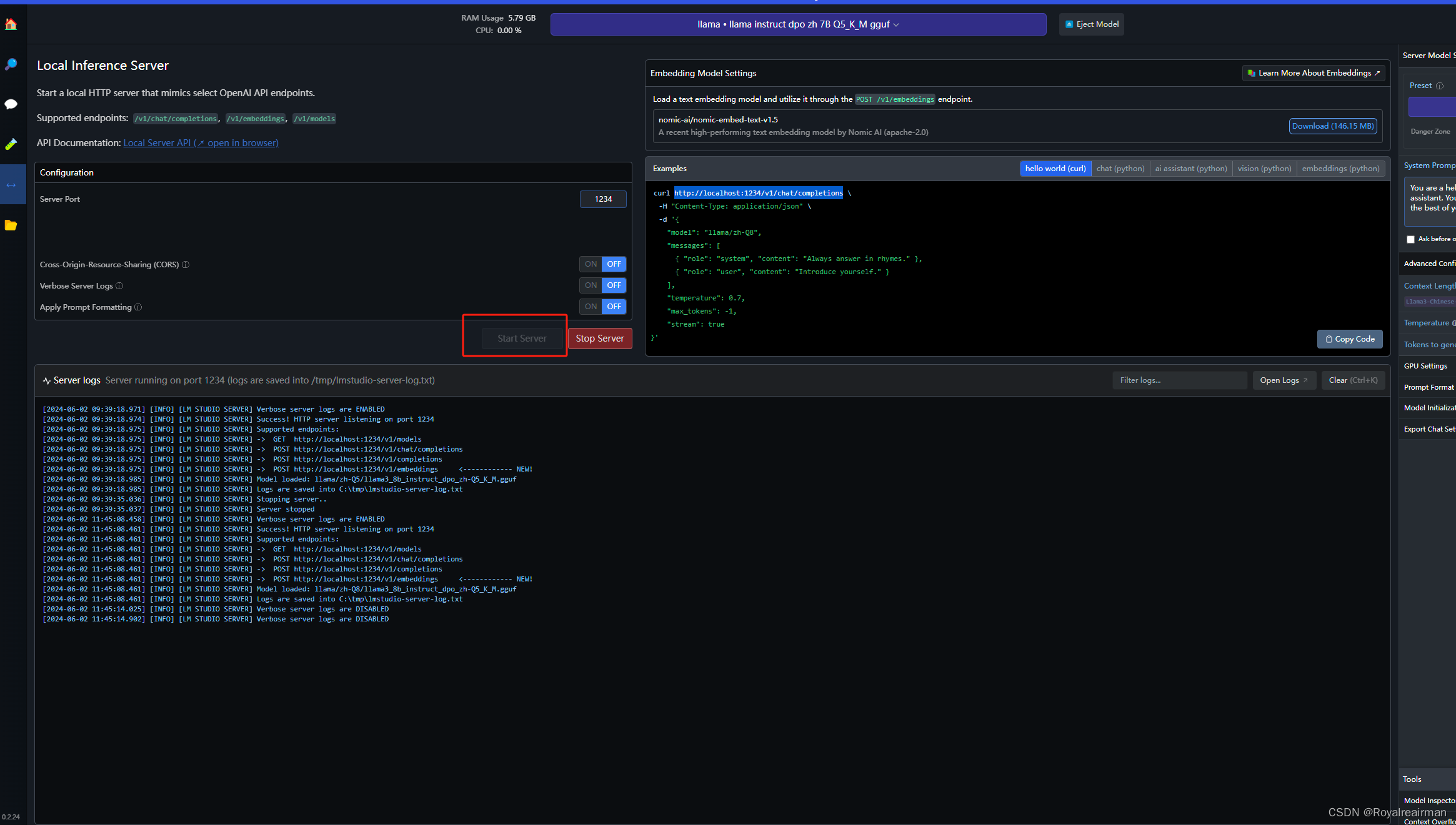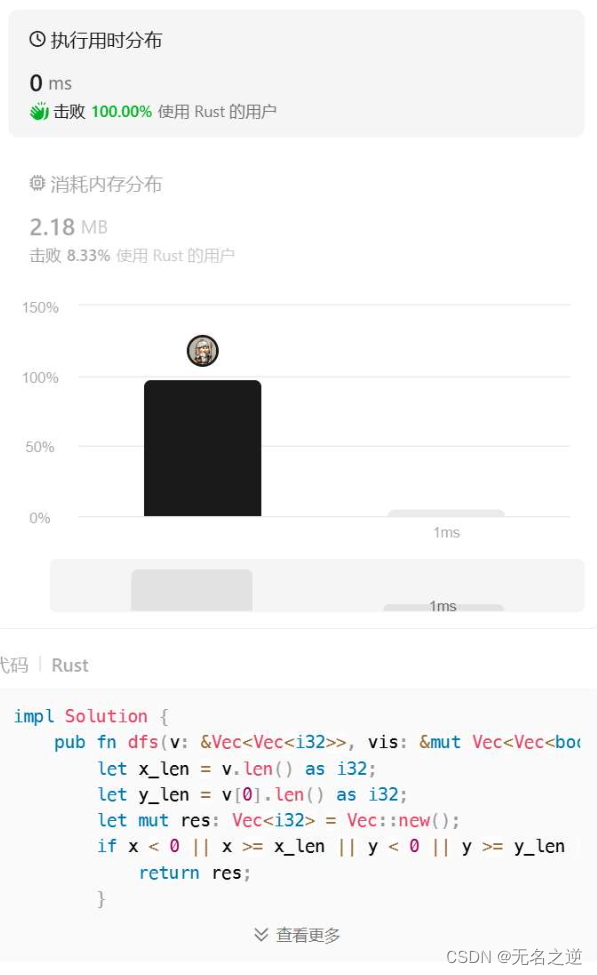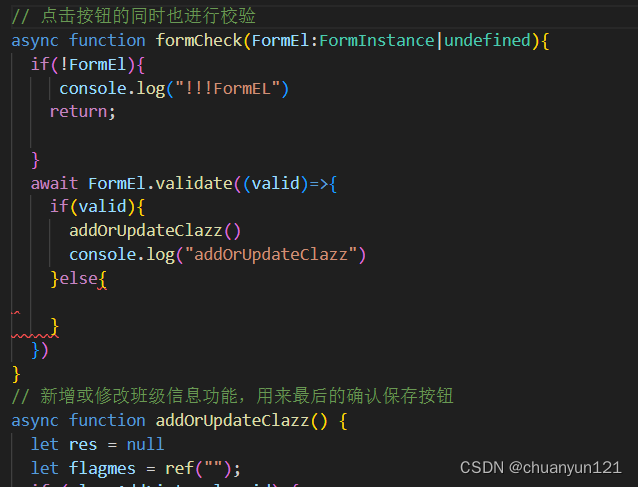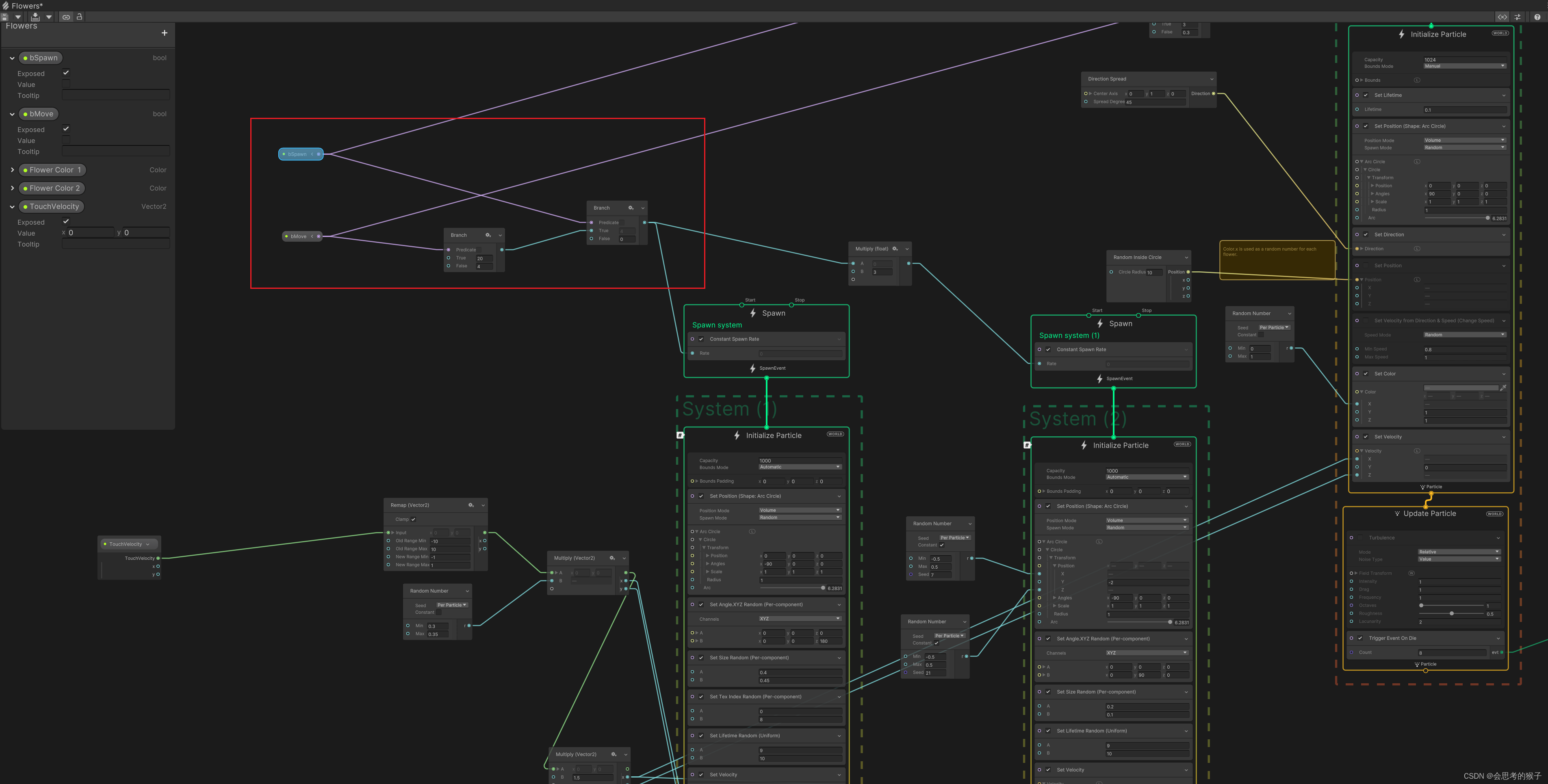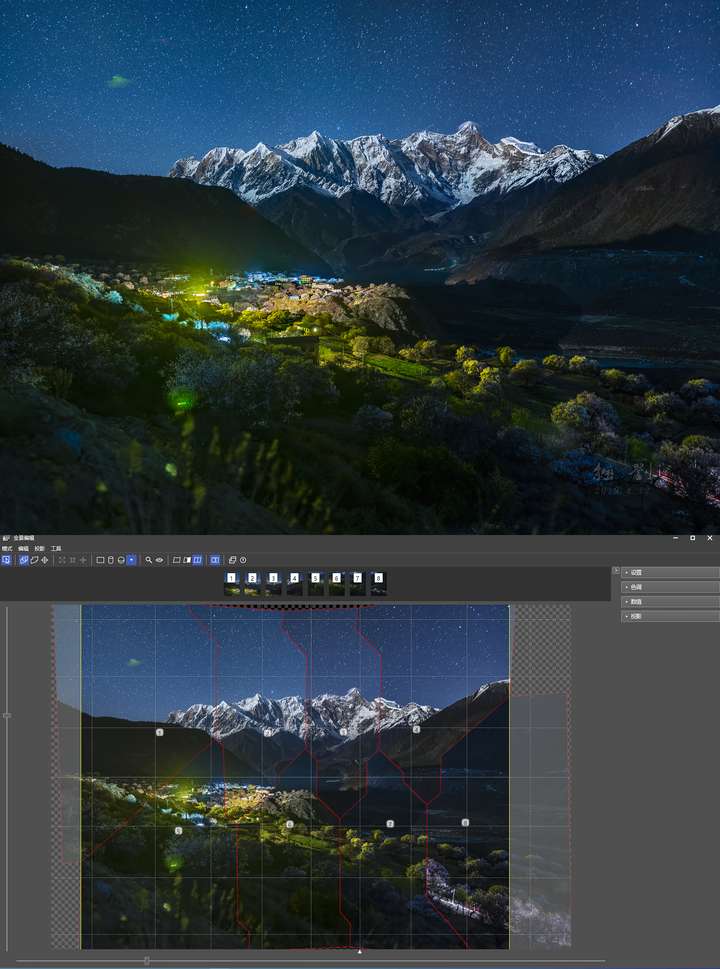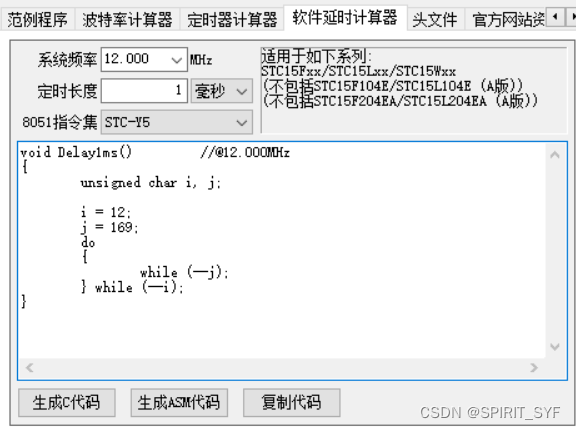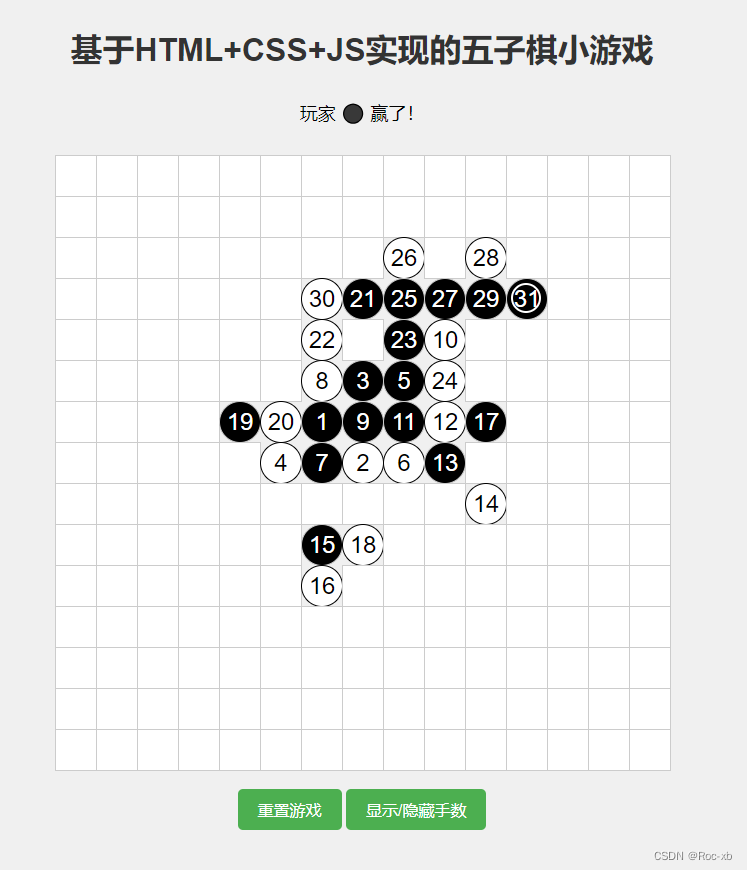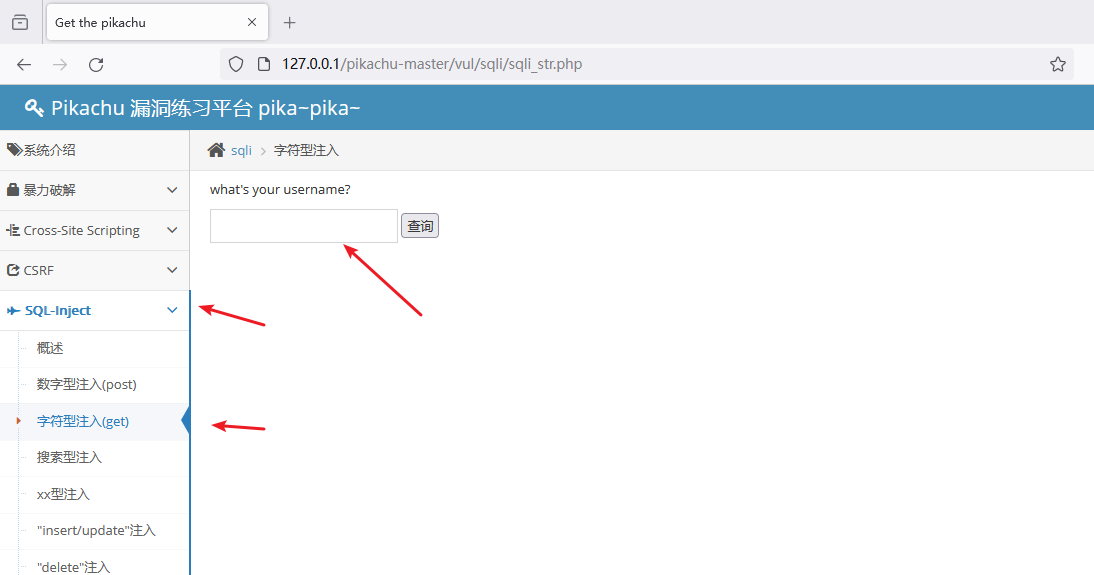目录
- 前言
- 一、RTMO推理(Python)
- 1. RTMO预测
- 2. RTMO预处理
- 3. RTMO后处理
- 4. RTMO推理
- 二、RTMO推理(C++)
- 1. ONNX导出
- 2. RTMO预处理
- 3. RTMO后处理
- 4. RTMO推理
- 三、RTMO部署
- 1. 源码下载
- 2. 环境配置
- 2.1 配置CMakeLists.txt
- 2.2 配置Makefile
- 3. ONNX导出
- 4. engine生成
- 5. 源码修改
- 6. 运行
- 结语
- 下载链接
- 参考
前言
在 MMPose-RTMO推理详解及部署实现(上) 文章中我们有提到如何导出 RTMO 的 ONNX 模型,这篇文章就来看看如何在 tensorRT 上推理得到结果
Note:开始之前大家务必参考 MMPose-RTMO推理详解及部署实现(上) 将对应的环境配置好,并将 RTMO 的 ONNX 导出来,这里博主就不再介绍了
参考:https://github.com/shouxieai/tensorRT_Pro
实现:https://github.com/Melody-Zhou/tensorRT_Pro-YOLOv8


一、RTMO推理(Python)
1. RTMO预测
我们先尝试利用官方预训练权重来推理一张图片并保存,看能否成功
将下载好的预训练权重放在 mmpose 项目下,准备开始推理,执行如下指令即可进行推理:
python demo/inferencer_demo.py ./tests/data/coco/000000197388.jpg --pose2d ./configs/body_2d_keypoint/rtmo/body7/rtmo-s_8xb32-600e_body7-640x640.py --pose2d-weights ./rtmo-s_8xb32-600e_body7-640x640-dac2bf74_20231211.pth --vis-out-dir vis_results
Note:--pose2d 指定的配置文件一定要与 --pose2d-weights 相对应
输出如下:

可以看到推理成功了,结果保存在 vis_results/000000197388.jpg,如下图所示:

2. RTMO预处理
模型推理成功后我们就要来梳理下 RTMO 的预处理和后处理,方便后续在 C++ 上实现,我们先来看预处理的实现。
我们来调试 demo/inferencer_demo.py 文件:

博主这里采用的是 vscode 进行代码的调试,其中的 launch.json 文件内容如下:
{
// 使用 IntelliSense 了解相关属性。
// 悬停以查看现有属性的描述。
// 欲了解更多信息,请访问: https://go.microsoft.com/fwlink/?linkid=830387
"version": "0.2.0",
"configurations": [
{
"name": "Python: 当前文件",
"type": "debugpy",
"request": "launch",
"program": "${file}",
"cwd": "${workspaceFolder}",
"console": "integratedTerminal",
"args": [
"./tests/data/coco/000000000785.jpg",
"--pose2d", "./configs/body_2d_keypoint/rtmo/body7/rtmo-s_8xb32-600e_body7-640x640.py",
"--pose2d-weights", "./rtmo-s_8xb32-600e_body7-640x640-dac2bf74_20231211.pth",
"--vis-out-dir", "vis_results",
// "--show"
],
"justMyCode": true,
}
]
}
可以看到我们通过 MMPoseInferencer 创建了一个推理类,并调用了它的 __call__ 方法,但是我们打断点会发现根本跳不进去
博主这里参考了 mmpose 的官方文档,重新写了一个简单的推理代码可以调试,具体可参考:https://mmpose.readthedocs.io/en/latest/user_guides/inference.html
from mmpose.apis import MMPoseInferencer
img_path = 'tests/data/coco/000000000785.jpg' # replace this with your own image path
# instantiate the inferencer using the model alias
pose2d = "./configs/body_2d_keypoint/rtmo/body7/rtmo-s_8xb32-600e_body7-640x640.py"
pose2d_weights = "./rtmo-s_8xb32-600e_body7-640x640-dac2bf74_20231211.pth"
inferencer = MMPoseInferencer(pose2d, pose2d_weights)
# The MMPoseInferencer API employs a lazy inference approach,
# creating a prediction generator when given input
result_generator = inferencer(img_path, show=False)
result = next(result_generator)
调试效果图如下:

可以看到它确实是调用了 MMPoseInferencer 的 __call__ 方法,我们往下走

可以看到接着调用了 self.preprocess 进行预处理,继续往下走:

可以看到它其实调用的是父类 BaseMMPoseInferencer 的 preprocess 函数,接着往下走:

可以看到它其实调用的是 Pose2DInferencer 类中的 preprocess_single 函数,本质上就是一个套娃,接着往下走

可以看到在 LoadImage 函数中调用的其实是父类的 transform 函数,接着往下走

我们分析可以得知这个部分其实就真正做了一部分的预处理,代码如下:
def transform(self, results: Dict) -> Optional[dict]:
"""The transform function of :class:`BottomupResize` to perform
photometric distortion on images.
See ``transform()`` method of :class:`BaseTransform` for details.
Args:
results (dict): Result dict from the data pipeline.
Returns:
dict: Result dict with images distorted.
"""
img = results['img']
img_h, img_w = results['ori_shape']
w, h = self.input_size
input_sizes = [(w, h)]
if self.aug_scales:
input_sizes += [(int(w * s), int(h * s)) for s in self.aug_scales]
imgs = []
for i, (_w, _h) in enumerate(input_sizes):
actual_input_size, padded_input_size = self._get_input_size(
img_size=(img_w, img_h), input_size=(_w, _h))
if self.use_udp:
center = np.array([(img_w - 1.0) / 2, (img_h - 1.0) / 2],
dtype=np.float32)
scale = np.array([img_w, img_h], dtype=np.float32)
warp_mat = get_udp_warp_matrix(
center=center,
scale=scale,
rot=0,
output_size=actual_input_size)
else:
center = np.array([img_w / 2, img_h / 2], dtype=np.float32)
scale = np.array([
img_w * padded_input_size[0] / actual_input_size[0],
img_h * padded_input_size[1] / actual_input_size[1]
],
dtype=np.float32)
warp_mat = get_warp_matrix(
center=center,
scale=scale,
rot=0,
output_size=padded_input_size)
_img = cv2.warpAffine(
img,
warp_mat,
padded_input_size,
flags=cv2.INTER_LINEAR,
borderValue=self.pad_val)
imgs.append(_img)
# Store the transform information w.r.t. the main input size
if i == 0:
results['img_shape'] = padded_input_size[::-1]
results['input_center'] = center
results['input_scale'] = scale
results['input_size'] = padded_input_size
if self.aug_scales:
results['img'] = imgs
results['aug_scales'] = self.aug_scales
else:
results['img'] = imgs[0]
results['aug_scale'] = None
return results
我们调试分析(省略…😄)可知这个部分其实就是做了一个 warpAffine,将图像缩放到 640x640x3
OK,我们接着往下走

可以看到在做完 warpAffine 之后又调用了 PackPoseInputs 类中的 transform 函数,它其实就是调用了 image_to_tensor 函数,如下所示:
def image_to_tensor(img: Union[np.ndarray,
Sequence[np.ndarray]]) -> torch.torch.Tensor:
"""Translate image or sequence of images to tensor. Multiple image tensors
will be stacked.
Args:
value (np.ndarray | Sequence[np.ndarray]): The original image or
image sequence
Returns:
torch.Tensor: The output tensor.
"""
if isinstance(img, np.ndarray):
if len(img.shape) < 3:
img = np.expand_dims(img, -1)
img = np.ascontiguousarray(img)
tensor = torch.from_numpy(img).permute(2, 0, 1).contiguous()
else:
assert is_seq_of(img, np.ndarray)
tensor = torch.stack([image_to_tensor(_img) for _img in img])
return tensor
经过我们分析可以得知,这部分主要实现的是 h,w,c→c,h,w 以及 to_tensor 的操作,这里我们得到的是一个 3x640x640 的 tensor,我们接着调:

经过调试分析(省略…😄)可以知道 preprocess 这个函数做的内容就这么多了,其余的预处理操作是在 forward 函数中调用的
在 Pose2DInferencer 类的 forward 中调用了 test_step 函数来做另外的预处理:

它实际上是执行了父类的 ImgDataPreprocessor 的 forward 过程,只不过这个过程被封装在底层了,我们无法进行调试,代码如下:
def forward(self, data: dict, training: bool = False) -> Union[dict, list]:
"""Performs normalization, padding and bgr2rgb conversion based on
``BaseDataPreprocessor``.
Args:
data (dict): Data sampled from dataset. If the collate
function of DataLoader is :obj:`pseudo_collate`, data will be a
list of dict. If collate function is :obj:`default_collate`,
data will be a tuple with batch input tensor and list of data
samples.
training (bool): Whether to enable training time augmentation. If
subclasses override this method, they can perform different
preprocessing strategies for training and testing based on the
value of ``training``.
Returns:
dict or list: Data in the same format as the model input.
"""
data = self.cast_data(data) # type: ignore
_batch_inputs = data['inputs']
# Process data with `pseudo_collate`.
if is_seq_of(_batch_inputs, torch.Tensor):
batch_inputs = []
for _batch_input in _batch_inputs:
# channel transform
if self._channel_conversion:
_batch_input = _batch_input[[2, 1, 0], ...]
# Convert to float after channel conversion to ensure
# efficiency
_batch_input = _batch_input.float()
# Normalization.
if self._enable_normalize:
if self.mean.shape[0] == 3:
assert _batch_input.dim(
) == 3 and _batch_input.shape[0] == 3, (
'If the mean has 3 values, the input tensor '
'should in shape of (3, H, W), but got the tensor '
f'with shape {_batch_input.shape}')
_batch_input = (_batch_input - self.mean) / self.std
batch_inputs.append(_batch_input)
# Pad and stack Tensor.
batch_inputs = stack_batch(batch_inputs, self.pad_size_divisor,
self.pad_value)
# Process data with `default_collate`.
elif isinstance(_batch_inputs, torch.Tensor):
assert _batch_inputs.dim() == 4, (
'The input of `ImgDataPreprocessor` should be a NCHW tensor '
'or a list of tensor, but got a tensor with shape: '
f'{_batch_inputs.shape}')
if self._channel_conversion:
_batch_inputs = _batch_inputs[:, [2, 1, 0], ...]
# Convert to float after channel conversion to ensure
# efficiency
_batch_inputs = _batch_inputs.float()
if self._enable_normalize:
_batch_inputs = (_batch_inputs - self.mean) / self.std
h, w = _batch_inputs.shape[2:]
target_h = math.ceil(
h / self.pad_size_divisor) * self.pad_size_divisor
target_w = math.ceil(
w / self.pad_size_divisor) * self.pad_size_divisor
pad_h = target_h - h
pad_w = target_w - w
batch_inputs = F.pad(_batch_inputs, (0, pad_w, 0, pad_h),
'constant', self.pad_value)
else:
raise TypeError('Output of `cast_data` should be a dict of '
'list/tuple with inputs and data_samples, '
f'but got {type(data)}: {data}')
data['inputs'] = batch_inputs
data.setdefault('data_samples', None)
return data
这里有两个分支,很明显我们调用的是第一个分支的内容(猜的…😄),那它做了哪些内容呢?主要有:
_batch_input = _batch_input[[2, 1, 0], ...]:bgr→rgb_batch_input = _batch_input.float():uint8→floatbatch_inputs = stack_batch(batch_inputs, self.pad_size_divisor, self.pad_value):添加 batch 维度
在执行完成后最终返回的输入如下图所示:

可以看到它的 shape 是 1x3x640x640,类型是 float32
我们接着往下调试会发现它开始进入网络中进行 forward 推理了,因此以上就是 RTMO 的整个预处理过程
我们总结下 RTMO 的预处理主要做了哪些事情:
- 1. warpAffine
- 2. bgr→rgb
- 3. c,h,w→h,w,c
- 4. h,w,c→b,c,h,w
那和我们常见的预处理方式略有不同,它没有 /255.0 这个操作,其他倒是相同,大家如果对 YOLOv5 的预处理熟悉的话,会发现 RTMO 的预处理和 YOLOv5 的预处理基本上一模一样,因此我们不难写出对应的预处理代码,如下所示:
def preprocess_warpAffine(image, dst_width=640, dst_height=640):
scale = min((dst_width / image.shape[1], dst_height / image.shape[0]))
ox = (dst_width - scale * image.shape[1]) / 2
oy = (dst_height - scale * image.shape[0]) / 2
M = np.array([
[scale, 0, ox],
[0, scale, oy]
], dtype=np.float32)
img_pre = cv2.warpAffine(image, M, (dst_width, dst_height), flags=cv2.INTER_LINEAR,
borderMode=cv2.BORDER_CONSTANT, borderValue=(114, 114, 114))
IM = cv2.invertAffineTransform(M)
# cv2.imwrite("img_pre.jpg", img_pre)
img_pre = (img_pre[...,::-1]).astype(np.float32)
img_pre = img_pre.transpose(2, 0, 1)[None]
img_pre = torch.from_numpy(img_pre)
return img_pre, IM
warpAffine 非常适合在 CUDA 上加速,关于 warpAffine 仿射变换的细节大家可以参考 YOLOv5推理详解及预处理高性能实现,这边不再赘述。
3. RTMO后处理
我们再来看看后处理的实现
后处理部分比较繁琐我们就不再 mmpose 中调试分析了,我们在上篇 [MMPose-RTMO推理详解及部署实现(上)] 文章导出 ONNX 时有提到 mmdeploy 在部署时会重写 head 部分,我们一起来看下:
# ========== rtmo_head.py ==========
# mmdeploy/codebase/mmpose/models/heads/rtmo_head.py
@FUNCTION_REWRITER.register_rewriter(
func_name='mmpose.models.heads.hybrid_heads.'
'rtmo_head.RTMOHead.forward')
def predict(self,
x: Tuple[Tensor],
batch_data_samples: List = [],
test_cfg: Optional[dict] = None):
"""Get predictions and transform to bbox and keypoints results.
Args:
x (Tuple[Tensor]): The input tensor from upstream network.
batch_data_samples: Batch image meta info. Defaults to None.
test_cfg: The runtime config for testing process.
Returns:
Tuple[Tensor]: Predict bbox and keypoint results.
- dets (Tensor): Predict bboxes and scores, which is a 3D Tensor,
has shape (batch_size, num_instances, 5), the last dimension 5
arrange as (x1, y1, x2, y2, score).
- pred_kpts (Tensor): Predict keypoints and scores, which is a 4D
Tensor, has shape (batch_size, num_instances, num_keypoints, 5),
the last dimension 3 arrange as (x, y, score).
"""
# deploy context
ctx = FUNCTION_REWRITER.get_context()
backend = get_backend(ctx.cfg)
deploy_cfg = ctx.cfg
cfg = self.test_cfg if test_cfg is None else test_cfg
# get predictions
cls_scores, bbox_preds, _, kpt_vis, pose_vecs = self.head_module(x)[:5]
assert len(cls_scores) == len(bbox_preds)
num_imgs = cls_scores[0].shape[0]
# flatten and concat predictions
scores = self._flatten_predictions(cls_scores).sigmoid()
flatten_bbox_preds = self._flatten_predictions(bbox_preds)
flatten_pose_vecs = self._flatten_predictions(pose_vecs)
flatten_kpt_vis = self._flatten_predictions(kpt_vis).sigmoid()
bboxes = self.decode_bbox(flatten_bbox_preds, self.flatten_priors,
self.flatten_stride)
if backend == Backend.TENSORRT:
# pad for batched_nms because its output index is filled with -1
bboxes = torch.cat(
[bboxes,
bboxes.new_zeros((bboxes.shape[0], 1, bboxes.shape[2]))],
dim=1)
scores = torch.cat(
[scores, scores.new_zeros((scores.shape[0], 1, 1))], dim=1)
# nms parameters
post_params = get_post_processing_params(deploy_cfg)
max_output_boxes_per_class = post_params.max_output_boxes_per_class
iou_threshold = cfg.get('nms_thr', post_params.iou_threshold)
score_threshold = cfg.get('score_thr', post_params.score_threshold)
pre_top_k = post_params.get('pre_top_k', -1)
keep_top_k = cfg.get('max_per_img', post_params.keep_top_k)
# do nms
_, _, nms_indices = multiclass_nms(
bboxes,
scores,
max_output_boxes_per_class,
iou_threshold,
score_threshold,
pre_top_k=pre_top_k,
keep_top_k=keep_top_k,
output_index=True)
batch_inds = torch.arange(num_imgs, device=scores.device).view(-1, 1)
# filter predictions
dets = torch.cat([bboxes, scores], dim=2)
dets = dets[batch_inds, nms_indices, ...]
pose_vecs = flatten_pose_vecs[batch_inds, nms_indices, ...]
kpt_vis = flatten_kpt_vis[batch_inds, nms_indices, ...]
grids = self.flatten_priors[nms_indices, ...]
# decode keypoints
bbox_cs = torch.cat(bbox_xyxy2cs(dets[..., :4], self.bbox_padding), dim=-1)
keypoints = self.dcc.forward_test(pose_vecs, bbox_cs, grids)
pred_kpts = torch.cat([keypoints, kpt_vis.unsqueeze(-1)], dim=-1)
return dets, pred_kpts
根据分析(省略…😄)我们知道 mmpose 后处理其实是包含了两部分:
- nms:非极大值抑制
- decode:框和关键点的解码
大家如果对 YOLOv8-Pose 的后处理熟悉的话,会发现 RTMO 的后处理和 YOLOv8-Pose 几乎一模一样,因此我们不难写出对应的后处理代码,如下所示:
def iou(box1, box2):
def area_box(box):
return (box[2] - box[0]) * (box[3] - box[1])
left = max(box1[0], box2[0])
top = max(box1[1], box2[1])
right = min(box1[2], box2[2])
bottom = min(box1[3], box2[3])
cross = max((right-left), 0) * max((bottom-top), 0)
union = area_box(box1) + area_box(box2) - cross
if cross == 0 or union == 0:
return 0
return cross / union
def NMS(boxes, iou_thres):
remove_flags = [False] * len(boxes)
keep_boxes = []
for i, ibox in enumerate(boxes):
if remove_flags[i]:
continue
keep_boxes.append(ibox)
for j in range(i + 1, len(boxes)):
if remove_flags[j]:
continue
jbox = boxes[j]
if iou(ibox, jbox) > iou_thres:
remove_flags[j] = True
return keep_boxes
def postprocess(pred, IM=[], conf_thres=0.25, iou_thres=0.5):
# 输入是模型推理的结果,即2000个预测框
# 1,2000,56 [cx,cy,w,h,conf,17*3]
boxes = []
for img_id, box_id in zip(*np.where(pred[...,4] > conf_thres)):
item = pred[img_id, box_id]
left, top, right, bottom, conf = item[:5]
keypoints = item[5:].reshape(-1, 3)
keypoints[:, 0] = keypoints[:, 0] * IM[0][0] + IM[0][2]
keypoints[:, 1] = keypoints[:, 1] * IM[1][1] + IM[1][2]
boxes.append([left, top, right, bottom, conf, *keypoints.reshape(-1).tolist()])
boxes = np.array(boxes)
lr = boxes[:,[0, 2]]
tb = boxes[:,[1, 3]]
boxes[:,[0,2]] = IM[0][0] * lr + IM[0][2]
boxes[:,[1,3]] = IM[1][1] * tb + IM[1][2]
boxes = sorted(boxes.tolist(), key=lambda x:x[4], reverse=True)
return NMS(boxes, iou_thres)
Note:不同点在于框的五个维度直接就是 left,top,right,bottom,conf,而不再是中心点宽高,这个我们在导出 ONNX 时有特别提到过
后处理中预测框的解码我们是通过仿射变换逆矩阵 IM 实现的,关于 IM 的细节大家可以参考 YOLOv5推理详解及预处理高性能实现,这边不再赘述。关于 NMS 的代码参考自 tensorRT_Pro 中的实现:yolo.cpp#L119
关键点的解码我们同样可以通过 IM 将其映射回原图上,因此 RTMO 的后处理和 YOLOv8-Pose 的基本上没什么区别,只是需要大家清楚模型预测的结果中每个维度所代表的含义即可
对于一张 640x640 的图片来说,RTMO 预测框的总数量是 2000,每个预测框的维度是 56(针对 COCO 数据集的人体 17 个关键点而言)
2000
×
56
=
40
×
40
×
56
+
20
×
20
×
56
=
40
×
40
×
(
5
+
51
)
+
20
×
20
×
(
5
+
51
)
=
40
×
40
×
(
5
+
17
×
3
)
+
20
×
20
×
(
5
+
17
×
3
)
\begin{aligned} 2000\times56&=40\times40\times56+20\times20\times56\\ &=40\times40\times(5+51)+20\times20\times(5+51)\\ &=40\times40\times(5+17\times3)+20\times20\times(5+17\times3)\\ \end{aligned}
2000×56=40×40×56+20×20×56=40×40×(5+51)+20×20×(5+51)=40×40×(5+17×3)+20×20×(5+17×3)
其中的 5 对应的是 left,top,right,bottom,conf,分别代表的含义是边界框左上角右下角坐标以及置信度;17 对应的是 COCO 数据集中的人体 17 个关键点,3 代表每个关键点的信息,包括 x,y,visibility,分别代表的含义是关键点的 x 和 y 坐标以及可见性或者说置信度,在对关键点进行可视化时我们只会可视化那些 visibility 大于 0.5 的关键点,因为低于 0.5 的关键点我们认为它被遮挡或者不在图像上。
目前主流的姿态点估计算法分为两种,一种是 top-down 自顶向下,先检测出图像中所有的人体检测框,再根据每个检测框识别姿态;另一种是 bottom-up 自低向上,先检测出图像中所有的骨骼点,再通过拼接得到多个人的骨架。两种方法各有优缺点,其中自顶向上的方法,姿态检测的准确度非常依赖目标检测框的质量;而自低向上的方法,如果两人离得非常近,容易出现模棱两可的情况,而且由于是依赖两个骨骼点之间的关系,所以失去了对全局的信息获取。
像 AlphaPose 和 YOLOv8-Pose 模型都是采用的自顶向下的方法,即先检测出所有的人体框再对每个人体做姿态估计;而 RTMO 模型采用的则是自低而上的方法,即先检测出所有的骨骼点然后再拼接。
4. RTMO推理
通过上面对 RTMO 的预处理和后处理分析之后,整个推理过程就显而易见了。RTMO 的推理包括图像预处理、模型推理、预测结果后处理三部分,其中预处理主要包括 warpAffine 仿射变换,后处理主要包括 boxes、keypoints 的 decode 解码和 NMS 两部分。
在 mmpose 项目下新建 infer.py 用于推理,完整的推理代码如下:
import cv2
import numpy as np
import onnxruntime as ort
def preprocess_warpAffine(image, dst_width=640, dst_height=640):
scale = min((dst_width / image.shape[1], dst_height / image.shape[0]))
ox = (dst_width - scale * image.shape[1]) / 2
oy = (dst_height - scale * image.shape[0]) / 2
M = np.array([
[scale, 0, ox],
[0, scale, oy]
], dtype=np.float32)
img_pre = cv2.warpAffine(image, M, (dst_width, dst_height), flags=cv2.INTER_LINEAR,
borderMode=cv2.BORDER_CONSTANT, borderValue=(114, 114, 114))
IM = cv2.invertAffineTransform(M)
# cv2.imwrite("img_pre.jpg", img_pre)
img_pre = (img_pre[...,::-1]).astype(np.float32)
img_pre = img_pre.transpose(2, 0, 1)[None]
# img_pre = torch.from_numpy(img_pre)
return img_pre, IM
def iou(box1, box2):
def area_box(box):
return (box[2] - box[0]) * (box[3] - box[1])
left = max(box1[0], box2[0])
top = max(box1[1], box2[1])
right = min(box1[2], box2[2])
bottom = min(box1[3], box2[3])
cross = max((right-left), 0) * max((bottom-top), 0)
union = area_box(box1) + area_box(box2) - cross
if cross == 0 or union == 0:
return 0
return cross / union
def NMS(boxes, iou_thres):
remove_flags = [False] * len(boxes)
keep_boxes = []
for i, ibox in enumerate(boxes):
if remove_flags[i]:
continue
keep_boxes.append(ibox)
for j in range(i + 1, len(boxes)):
if remove_flags[j]:
continue
jbox = boxes[j]
if iou(ibox, jbox) > iou_thres:
remove_flags[j] = True
return keep_boxes
def postprocess(pred, IM=[], conf_thres=0.25, iou_thres=0.5):
# 输入是模型推理的结果,即2000个预测框
# 1,2000,56 [cx,cy,w,h,conf,17*3]
boxes = []
for img_id, box_id in zip(*np.where(pred[...,4] > conf_thres)):
item = pred[img_id, box_id]
left, top, right, bottom, conf = item[:5]
keypoints = item[5:].reshape(-1, 3)
keypoints[:, 0] = keypoints[:, 0] * IM[0][0] + IM[0][2]
keypoints[:, 1] = keypoints[:, 1] * IM[1][1] + IM[1][2]
boxes.append([left, top, right, bottom, conf, *keypoints.reshape(-1).tolist()])
boxes = np.array(boxes)
lr = boxes[:,[0, 2]]
tb = boxes[:,[1, 3]]
boxes[:,[0,2]] = IM[0][0] * lr + IM[0][2]
boxes[:,[1,3]] = IM[1][1] * tb + IM[1][2]
boxes = sorted(boxes.tolist(), key=lambda x:x[4], reverse=True)
return NMS(boxes, iou_thres)
def hsv2bgr(h, s, v):
h_i = int(h * 6)
f = h * 6 - h_i
p = v * (1 - s)
q = v * (1 - f * s)
t = v * (1 - (1 - f) * s)
r, g, b = 0, 0, 0
if h_i == 0:
r, g, b = v, t, p
elif h_i == 1:
r, g, b = q, v, p
elif h_i == 2:
r, g, b = p, v, t
elif h_i == 3:
r, g, b = p, q, v
elif h_i == 4:
r, g, b = t, p, v
elif h_i == 5:
r, g, b = v, p, q
return int(b * 255), int(g * 255), int(r * 255)
def random_color(id):
h_plane = (((id << 2) ^ 0x937151) % 100) / 100.0
s_plane = (((id << 3) ^ 0x315793) % 100) / 100.0
return hsv2bgr(h_plane, s_plane, 1)
skeleton = [[16, 14], [14, 12], [17, 15], [15, 13], [12, 13], [6, 12], [7, 13], [6, 7], [6, 8],
[7, 9], [8, 10], [9, 11], [2, 3], [1, 2], [1, 3], [2, 4], [3, 5], [4, 6], [5, 7]]
pose_palette = np.array([[255, 128, 0], [255, 153, 51], [255, 178, 102], [230, 230, 0], [255, 153, 255],
[153, 204, 255], [255, 102, 255], [255, 51, 255], [102, 178, 255], [51, 153, 255],
[255, 153, 153], [255, 102, 102], [255, 51, 51], [153, 255, 153], [102, 255, 102],
[51, 255, 51], [0, 255, 0], [0, 0, 255], [255, 0, 0], [255, 255, 255]],dtype=np.uint8)
kpt_color = pose_palette[[16, 16, 16, 16, 16, 0, 0, 0, 0, 0, 0, 9, 9, 9, 9, 9, 9]]
limb_color = pose_palette[[9, 9, 9, 9, 7, 7, 7, 0, 0, 0, 0, 0, 16, 16, 16, 16, 16, 16, 16]]
if __name__ == "__main__":
# 1. preprocess
img = cv2.imread("./tests/data/coco/000000197388.jpg")
img_pre, IM = preprocess_warpAffine(img)
model_path = "./rtmo-s_8xb32-600e_body7-640x640.onnx"
session = ort.InferenceSession(model_path)
input_name = 'images'
inputs = {input_name: img_pre}
# 2. infer
outputs = session.run(None, inputs)[0]
# 3. postprocess
boxes = postprocess(outputs, IM)
# 4. visualize
for box in boxes:
left, top, right, bottom = int(box[0]), int(box[1]), int(box[2]), int(box[3])
confidence = box[4]
label = 0
color = random_color(label)
cv2.rectangle(img, (left, top), (right, bottom), color, 2, cv2.LINE_AA)
caption = f"person {confidence:.2f}"
w, h = cv2.getTextSize(caption, 0, 1, 2)[0]
cv2.rectangle(img, (left - 3, top - 33), (left + w + 10, top), color, -1)
cv2.putText(img, caption, (left, top - 5), 0, 1, (0, 0, 0), 2, 16)
keypoints = box[5:]
keypoints = np.array(keypoints).reshape(-1, 3)
for i, keypoint in enumerate(keypoints):
x, y, conf = keypoint
color_k = [int(x) for x in kpt_color[i]]
if conf < 0.5:
continue
if x != 0 and y != 0:
cv2.circle(img, (int(x), int(y)), 3, color_k, -1, lineType=cv2.LINE_AA)
for i, sk in enumerate(skeleton):
pos1 = (int(keypoints[(sk[0] - 1), 0]), int(keypoints[(sk[0] - 1), 1]))
pos2 = (int(keypoints[(sk[1] - 1), 0]), int(keypoints[(sk[1] - 1), 1]))
conf1 = keypoints[(sk[0] - 1), 2]
conf2 = keypoints[(sk[1] - 1), 2]
if conf1 < 0.5 or conf2 < 0.5:
continue
if pos1[0] == 0 or pos1[1] == 0 or pos2[0] == 0 or pos2[1] == 0:
continue
cv2.line(img, pos1, pos2, [int(x) for x in limb_color[i]], thickness=2, lineType=cv2.LINE_AA)
cv2.imwrite("infer-pose.jpg", img)
print("save done")
Note:这里我们采用 onnxruntime 推理,使用的 onnx 是我们 MMPose-RTMO推理详解及部署实现(上) 文章中导出的 onnx,可视化的代码参考自 YOLOv8-Pose,大家感兴趣的可以看下:YOLOv8-Pose推理详解及部署实现
执行成功后会在当前目录下生成 infer-pose.jpg 推理结果图像,如下图所示:

至此,我们在 Python 上面完成了 RTMO 的整个推理过程,下面我们去 C++ 上实现。
二、RTMO推理(C++)
C++ 上的实现我们使用的 repo 依旧是 tensorRT_Pro,现在我们就基于 tensorRT_Pro 完成 RTMO 在 C++ 上的推理。
1. ONNX导出
ONNX 导出的细节请参考 MMPose-RTMO推理详解及部署实现(上),这边不再赘述。
2. RTMO预处理
之前有提到过 RTMO 的预处理部分和 YOLOv5 实现基本一样,因此我们在 tensorRT_Pro 中 RTMO 模型的预处理可以直接使用 YOLOv5 的预处理,只是需要注意在 CUDAKernel::Norm 的指定时不再除以 255.0 即可。
tensorRT_Pro 的预处理代码如下:
__global__ void warp_affine_bilinear_and_normalize_plane_kernel(uint8_t* src, int src_line_size, int src_width, int src_height, float* dst, int dst_width, int dst_height,
uint8_t const_value_st, float* warp_affine_matrix_2_3, Norm norm, int edge){
int position = blockDim.x * blockIdx.x + threadIdx.x;
if (position >= edge) return;
float m_x1 = warp_affine_matrix_2_3[0];
float m_y1 = warp_affine_matrix_2_3[1];
float m_z1 = warp_affine_matrix_2_3[2];
float m_x2 = warp_affine_matrix_2_3[3];
float m_y2 = warp_affine_matrix_2_3[4];
float m_z2 = warp_affine_matrix_2_3[5];
int dx = position % dst_width;
int dy = position / dst_width;
float src_x = m_x1 * dx + m_y1 * dy + m_z1;
float src_y = m_x2 * dx + m_y2 * dy + m_z2;
float c0, c1, c2;
if(src_x <= -1 || src_x >= src_width || src_y <= -1 || src_y >= src_height){
// out of range
c0 = const_value_st;
c1 = const_value_st;
c2 = const_value_st;
}else{
int y_low = floorf(src_y);
int x_low = floorf(src_x);
int y_high = y_low + 1;
int x_high = x_low + 1;
uint8_t const_value[] = {const_value_st, const_value_st, const_value_st};
float ly = src_y - y_low;
float lx = src_x - x_low;
float hy = 1 - ly;
float hx = 1 - lx;
float w1 = hy * hx, w2 = hy * lx, w3 = ly * hx, w4 = ly * lx;
uint8_t* v1 = const_value;
uint8_t* v2 = const_value;
uint8_t* v3 = const_value;
uint8_t* v4 = const_value;
if(y_low >= 0){
if (x_low >= 0)
v1 = src + y_low * src_line_size + x_low * 3;
if (x_high < src_width)
v2 = src + y_low * src_line_size + x_high * 3;
}
if(y_high < src_height){
if (x_low >= 0)
v3 = src + y_high * src_line_size + x_low * 3;
if (x_high < src_width)
v4 = src + y_high * src_line_size + x_high * 3;
}
// same to opencv
c0 = floorf(w1 * v1[0] + w2 * v2[0] + w3 * v3[0] + w4 * v4[0] + 0.5f);
c1 = floorf(w1 * v1[1] + w2 * v2[1] + w3 * v3[1] + w4 * v4[1] + 0.5f);
c2 = floorf(w1 * v1[2] + w2 * v2[2] + w3 * v3[2] + w4 * v4[2] + 0.5f);
}
if(norm.channel_type == ChannelType::Invert){
float t = c2;
c2 = c0; c0 = t;
}
if(norm.type == NormType::MeanStd){
c0 = (c0 * norm.alpha - norm.mean[0]) / norm.std[0];
c1 = (c1 * norm.alpha - norm.mean[1]) / norm.std[1];
c2 = (c2 * norm.alpha - norm.mean[2]) / norm.std[2];
}else if(norm.type == NormType::AlphaBeta){
c0 = c0 * norm.alpha + norm.beta;
c1 = c1 * norm.alpha + norm.beta;
c2 = c2 * norm.alpha + norm.beta;
}
int area = dst_width * dst_height;
float* pdst_c0 = dst + dy * dst_width + dx;
float* pdst_c1 = pdst_c0 + area;
float* pdst_c2 = pdst_c1 + area;
*pdst_c0 = c0;
*pdst_c1 = c1;
*pdst_c2 = c2;
}
关于预处理部分其实就是调用了上述 CUDA 核函数来实现 warpAffine,由于在 CUDA 中我们是对每个像素进行操作,因此非常容易实现 BGR → RGB,/255.0 等操作。关于代码的具体分析可以参考 YOLOv5推理详解及预处理高性能实现,这边不再赘述。
3. RTMO后处理
之前有提到过 RTMO 的检测框后处理部分和 YOLOv8-Pose 基本相同,只是框的维度信息变为了左上角和右下角坐标,代码可参考:yolo_pose_decode.cu#L13
因此我们不难写出 RTMO 的 decode 解码部分的实现部分,如下所示:
static __global__ void decode_kernel_rtmo(float *predict, int num_bboxes, float confidence_threshold, float* invert_affine_matrix, float* parray, int MAX_IMAGE_BOXES){
int position = blockDim.x * blockIdx.x + threadIdx.x;
if(position >= num_bboxes) return;
float* pitem = predict + (5 + 3 * NUM_KEYPOINTS) * position;
float left = *pitem++;
float top = *pitem++;
float right = *pitem++;
float bottom = *pitem++;
float confidence = *pitem++;
if(confidence < confidence_threshold)
return;
int index = atomicAdd(parray, 1);
if(index >= MAX_IMAGE_BOXES)
return;
affine_project(invert_affine_matrix, left, top, &left, &top);
affine_project(invert_affine_matrix, right, bottom, &right, &bottom);
float* pout_item = parray + 1 + index * NUM_BOX_ELEMENT;
*pout_item++ = left;
*pout_item++ = top;
*pout_item++ = right;
*pout_item++ = bottom;
*pout_item++ = confidence;
*pout_item++ = 1; // 1 = keep, 0 = ignore
for(int i = 0; i < NUM_KEYPOINTS; ++i){
float keypoint_x = *pitem++;
float keypoint_y = *pitem++;
float keypoint_confidence = *pitem++;
affine_project(invert_affine_matrix, keypoint_x, keypoint_y, &keypoint_x, &keypoint_y);
*pout_item++ = keypoint_x;
*pout_item++ = keypoint_y;
*pout_item++ = keypoint_confidence;
}
}
关于 decode 的具体实现其实就是启动多个线程,每个线程处理一个框的解码,包括框坐标和关键点坐标的解码,我们会通过仿射变换逆矩阵 IM 将坐标映射回原图上的,关于 decode 代码的详细分析可参考 infer源码阅读之yolo.cu,这边不再赘述。
另外关于 NMS 部分,由于在 RTMO 模型中没有 label 类别标签维度,因此也需要适当调整,调整后的 NMS 代码如下:
static __global__ void nms_kernel_rtmo(float* bboxes, int max_objects, float threshold){
int position = (blockDim.x * blockIdx.x + threadIdx.x);
int count = min((int)*bboxes, max_objects);
if (position >= count)
return;
// left, top, right, bottom, confidence, keepflag, (keypoint_x, keypoint_y, keypoint_confidence) * 17
float* pcurrent = bboxes + 1 + position * NUM_BOX_ELEMENT;
for(int i = 0; i < count; ++i){
float* pitem = bboxes + 1 + i * NUM_BOX_ELEMENT;
if(i == position) continue;
if(pitem[4] >= pcurrent[4]){
if(pitem[4] == pcurrent[4] && i < position)
continue;
float iou = box_iou(
pcurrent[0], pcurrent[1], pcurrent[2], pcurrent[3],
pitem[0], pitem[1], pitem[2], pitem[3]
);
if(iou > threshold){
pcurrent[5] = 0; // 1=keep, 0=ignore
return;
}
}
}
}
关于 NMS 的具体实现也是启动多个线程,每个线程处理一个框,如果剩余框中的置信度大于当前线程中处理的框,则计算两个框的 IoU,通过 IoU 值判断是否保留该框。相比于 CPU 版的 NMS 应该是少套了一层循环,另外一层循环是通过 CUDA 上线程的并行操作处理的,代码参考自:yolo_decode.cu#L81
4. RTMO推理
通过上面对 RTMO 的预处理和后处理分析之后,整个推理过程就显而易见了。C++ 上 RTMO 的预处理部分可直接沿用 YOLOv5 的预处理,后处理中的 decode 解码和 NMS 部分需要简单修改。
我们在终端执行如下指令即可完成推理(注意!完整流程博主会在后续内容介绍,这边只是简单演示):
make rtmo -j64
编译图解如下所示:

可以看到使用 tensorRT_Pro 自带的编译接口出现了节点解析错误,这是因为我们导出的 ONNX 中包含 LayerNormalization 的节点,tensorRT 只有在 8.6 版本之后才开始支持 LayerNormalization 算子,而 tensorRT_Pro 自己构建的 onnx_parser 是 8.0 版本的,因此会出现解析错误
我们目前无法通过 TRT::compile 编译接口生成 engine,摆在我们面前的依旧是两种方案,一种是手动替换 onnx-parser 解析器,这点我们在 RT-DETR推理详解及部署实现 有详细讲过;另一种就是利用高版本的 tensorRT 的 trtexec 工具生成 engine
我们先来看第二种方案,利用高版本的 trtexec 工具生成 engine
博主新建了一个 build.sh 脚本文件,其内容如下:
#! /usr/bin/bash
TRTEXEC=/home/jarvis/lean/TensorRT-8.6.1.6/bin/trtexec
# export LD_LIBRARY_PATH=$LD_LIBRARY_PATH:/home/jarvis/lean/TensorRT-8.6.1.6/lib
# rtmo
${TRTEXEC} --onnx=rtmo-s_8xb32-600e_body7-640x640.onnx --minShapes=images:1x3x640x640 --optShapes=images:1x3x640x640 --maxShapes=images:16x3x640x640 --saveEngine=rtmo-s_8xb32-600e_body7-640x640.FP32.trtmodel
在终端执行如下指令即可:
bash build.sh


可以看到 engien 生成成功了,接下来就是拿着 engine 去进行推理了
我们继续执行刚才的指令即可完成推理:
make rtmo -j64
输出如下:

推理结果如下图所示:

PS:方案一手动替换 onnx-parser 我们在 RT-DETR推理详解及部署实现 有详细讲过,这边就不再赘述了
采用方案一替换 onnx-parser 之后我们就可以通过 TRT::compile 来构建 engine 了,输出如下图所示:

至此,我们在 C++ 上面完成了 RTMO 的整个推理过程,下面我们将完整的走一遍流程。
三、RTMO部署
博主新建了一个仓库 tensorRT_Pro-YOLOv8,该仓库基于 shouxieai/tensorRT_Pro,并进行了调整以支持 YOLOv8 的各项任务,目前已支持分类、检测、分割、姿态点估计任务。
下面我们就来具体看看如何利用 tensorRT_Pro-YOLOv8 这个 repo 完成 RTMO 的推理。
1. 源码下载
tensorRT_Pro-YOLOv8 的代码可以直接从 GitHub 官网上下载,源码下载地址是 https://github.com/Melody-Zhou/tensorRT_Pro-YOLOv8,Linux 下代码克隆指令如下:
git clone https://github.com/Melody-Zhou/tensorRT_Pro-YOLOv8.git
也可手动点击下载,点击右上角的 Code 按键,将代码下载下来。至此整个项目就已经准备好了。也可以点击 here 下载博主准备好的源代码(注意代码下载于 2024/6/1 日,若有改动请参考最新)
2. 环境配置
需要使用的软件环境有 TensorRT、CUDA、cuDNN、OpenCV、Protobuf,所有软件环境的安装可以参考 Ubuntu20.04软件安装大全,这里不再赘述,需要各位看官自行配置好相关环境😄,外网访问较慢,这里提供下博主安装过程中的软件安装包下载链接 Baidu Drive【pwd:yolo】🚀🚀🚀
tensorRT_Pro-YOLOv8 提供 CMakeLists.txt 和 Makefile 两种方式编译,二者选一即可
2.1 配置CMakeLists.txt
主要修改五处
1. 修改第 13 行,修改 OpenCV 路径
set(OpenCV_DIR "/usr/local/include/opencv4/")
2. 修改第 15 行,修改 CUDA 路径
set(CUDA_TOOLKIT_ROOT_DIR "/usr/local/cuda-11.6")
3. 修改第 16 行,修改 cuDNN 路径
set(CUDNN_DIR "/usr/local/cudnn8.4.0.27-cuda11.6")
4. 修改第 17 行,修改 tensorRT 路径(版本必须大于 8.6)
set(TENSORRT_DIR "/home/jarvis/lean/TensorRT-8.6.1.6")
5. 修改第 20 行,修改 protobuf 路径
set(PROTOBUF_DIR "/home/jarvis/protobuf")
2.2 配置Makefile
主要修改五处
1. 修改第 4 行,修改 protobuf 路径
lean_protobuf := /home/jarvis/protobuf
2. 修改第 5 行,修改 tensorRT 路径(版本必须大于 8.6)
lean_tensor_rt := /home/jarvis/lean/TensorRT-8.6.1.6
3. 修改第 6 行,修改 cuDNN 路径
lean_cudnn := /usr/local/cudnn8.4.0.27-cuda11.6
4. 修改第 7 行,修改 OpenCV 路径
lean_opencv := /usr/local
5. 修改第 8 行,修改 CUDA 路径
lean_cuda := /usr/local/cuda-11.6
3. ONNX导出
导出细节可以查看 MMPose-RTMO推理详解及部署实现(上),这边不再赘述。记得将导出的 ONNX 模型放在 tensorRT_Pro-YOLOv8/workspace 文件夹下。
4. engine生成
修改 workspace 下 build.sh 文件内容,如下所示:
#! /usr/bin/bash
TRTEXEC=/home/jarvis/lean/TensorRT-8.6.1.6/bin/trtexec
# export LD_LIBRARY_PATH=$LD_LIBRARY_PATH:/home/jarvis/lean/TensorRT-8.6.1.6/lib
# rtmo
${TRTEXEC} --onnx=rtmo-s_8xb32-600e_body7-640x640.onnx --minShapes=images:1x3x640x640 --optShapes=images:1x3x640x640 --maxShapes=images:16x3x640x640 --saveEngine=rtmo-s_8xb32-600e_body7-640x640.FP32.trtmodel
其中需要修改 TRTEXEC 的路径为你自己的路径,终端执行如下指令:
cd tensorRT_Pro-YOLOv8/workspace
bash build.sh
5. 源码修改
如果你想推理自己训练的模型还需要修改下源代码,RTMO 模型的推理代码主要在 app_rtmo.cpp 文件中,我们就只需要修改这一个文件的内容即可,源码修改较简单主要有以下几点:
- app_rtmo.cpp 292 行,“rtmo-s_8xb32-600e_body7-640x640”修改为你导出的 ONNX 模型名
具体修改示例如下:
test(TRT::Mode::FP32, "best") // 修改1 292行"rtmo-s_8xb32-600e_body7-640x640"改成"best"
6. 运行
OK!源码修改好了,Makefile 编译文件也搞定了,engine 模型也准备好了,现在可以编译运行了,直接在终端执行如下指令即可:
make rtmo -j64
推理过程如下图所示:

推理成功后会生成 rtmo-s_8xb32-600e_body7-640x640_RTMO_FP32_result 文件夹,该文件夹下保存了推理的图片。
模型推理效果如下图所示:


OK,以上就是使用 tensorRT_Pro-YOLOv8 推理 RTMO 的大致流程,若有问题,欢迎各位看官批评指正。
结语
博主在这里针对 RTMO 的预处理和后处理做了简单分析,同时与大家分享了 C++ 上的实现流程,目的是帮大家理清思路,更好的完成后续的部署工作😄。感谢各位看到最后,创作不易,读后有收获的看官请帮忙点个👍⭐️
通过分析 MMPose-RTMO 整个模型的导出和部署博主还是学到了很多东西的,同时把之前学习到的知识都回顾了一遍,虽然整个过程比较痛苦,不过总归还是有收获的🤗
最后大家如果觉得 tensorRT_Pro-YOLOv8 这个 repo 对你有帮助的话,不妨点个 ⭐️ 支持一波,这对博主来说非常重要,感谢各位🙏。
下载链接
- 软件安装包下载链接【提取码:yolo】🚀🚀🚀
- 源代码、权重下载链接【提取码:rtmo】
参考
- MMPose-RTMO推理详解及部署实现(上)
- https://github.com/shouxieai/tensorRT_Pro
- https://github.com/Melody-Zhou/tensorRT_Pro-YOLOv8
- YOLOv5推理详解及预处理高性能实现
- YOLOv8-Pose推理详解及部署实现
- RT-DETR推理详解及部署实现


